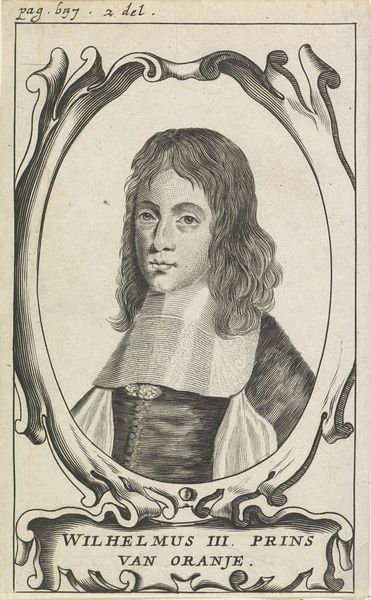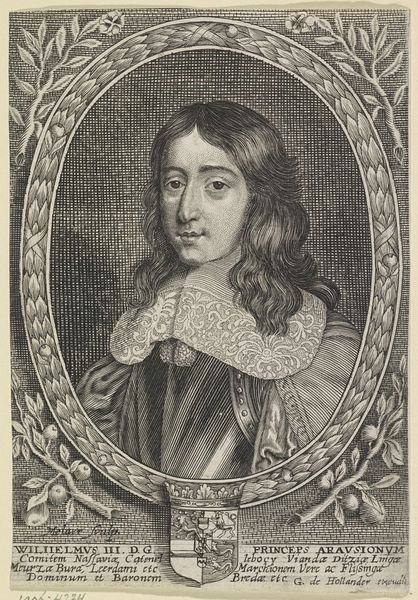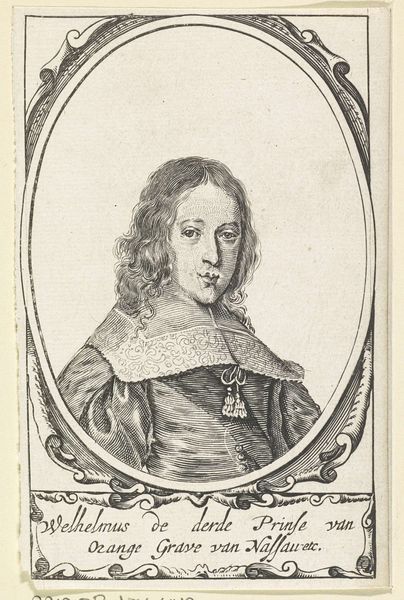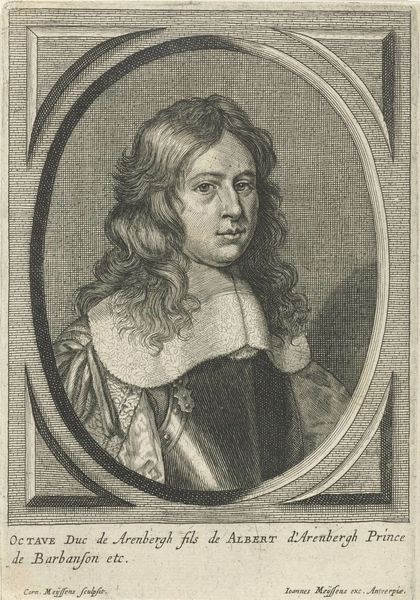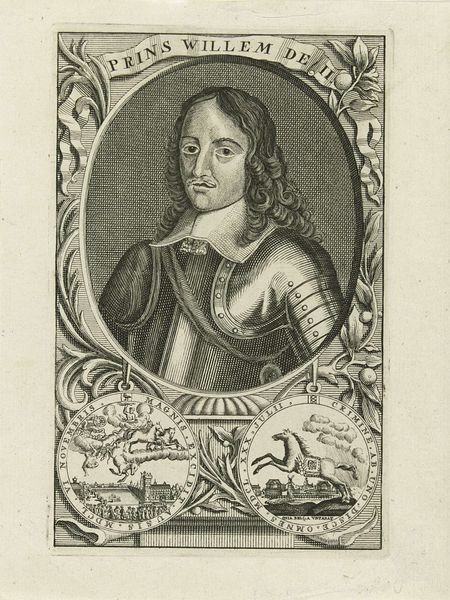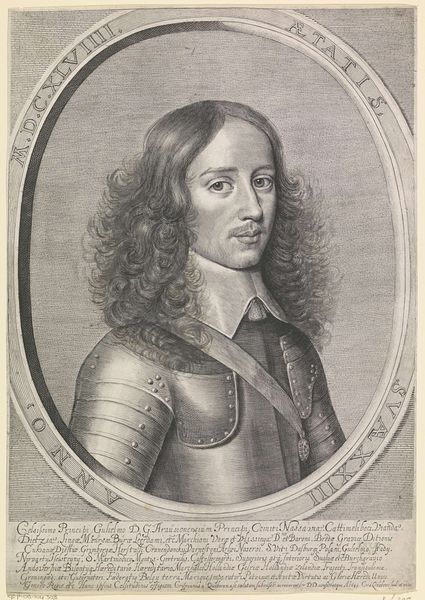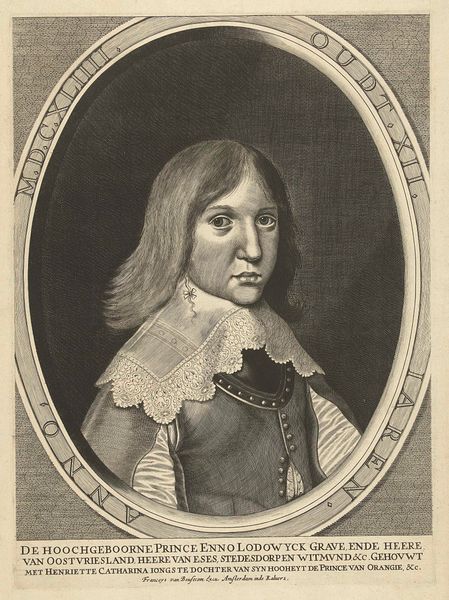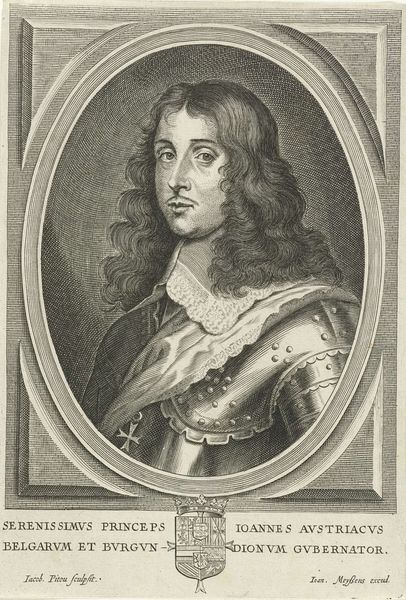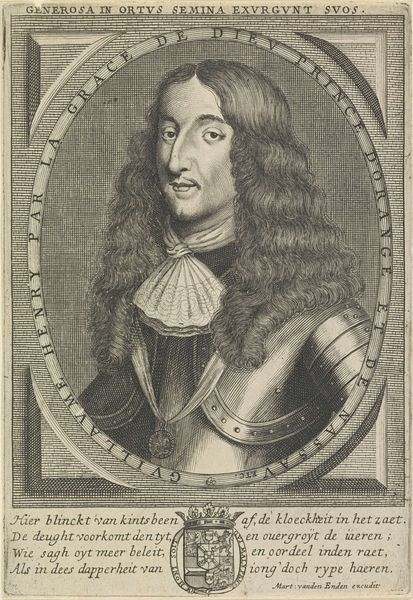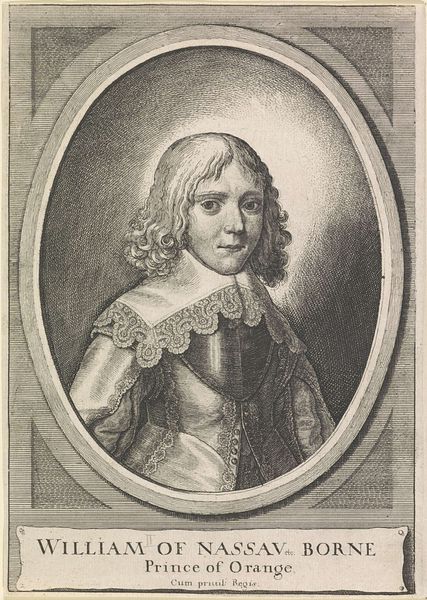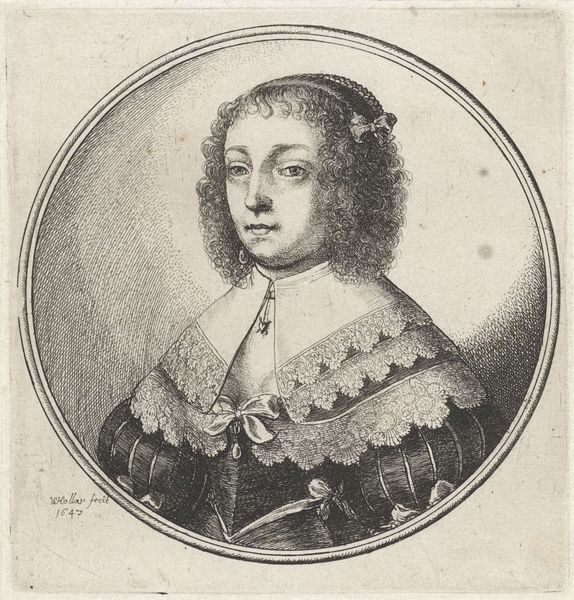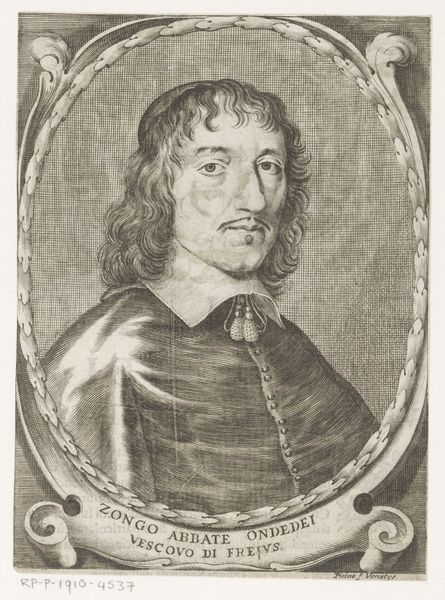
engraving
#
portrait
#
baroque
#
old engraving style
#
portrait drawing
#
history-painting
#
engraving
Dimensions: height 219 mm, width 152 mm
Copyright: Rijks Museum: Open Domain
Curator: Here we see a Baroque engraving titled "Portret van Willem III, prins van Oranje," or Portrait of William III, Prince of Orange, made sometime between 1660 and 1693 by Johann Martin Lerch. The work is held at the Rijksmuseum. Editor: The fine lines of the engraving create such a serene, almost ethereal effect. It’s as though the young prince is captured in a moment of contemplative stillness, despite the formality of the setting. Curator: Portraits like this, though seemingly straightforward, often acted as potent symbols of power and legitimacy. The baroque period loved splendor, so the fact that he's in armor and with a noble's ruff reinforces that sense of authority and the continuous rule. Editor: And the ornate frame adds to that, boxing in, even solidifying his position. I wonder about the psychological implications for him, the weight of expectation placed on someone so young. How does that image speak to the context of Dutch royalty in that era? It’s hard to look at this outside of that lens. Curator: William III embodied Dutch resistance against French expansionism. Symbols of defiance were often layered, using the image to rally national pride and solidify support against Louis XIV. This depiction could have had an iconic status within political prints of the period. Editor: Looking closely at this portrait and knowing a bit about William's later role as King of England, it also strikes me how easily these images could traverse borders. Visual propaganda was used to shape perceptions, to smooth his image. Curator: And speaking to visual continuity, this image echoes the established symbols of the House of Orange, reinforcing lineage and destiny with carefully chosen visual markers. The artistry is there, but it served a very calculated purpose, embedding itself into collective memory. Editor: It’s fascinating to think about the ongoing effect these images can have, even centuries later. Thank you. Curator: Indeed, seeing this engraving as a moment frozen in time helps appreciate the continuous force it exerted over the ages.
Comments
No comments
Be the first to comment and join the conversation on the ultimate creative platform.
